How to Design a Nursery: Dos and Don’ts
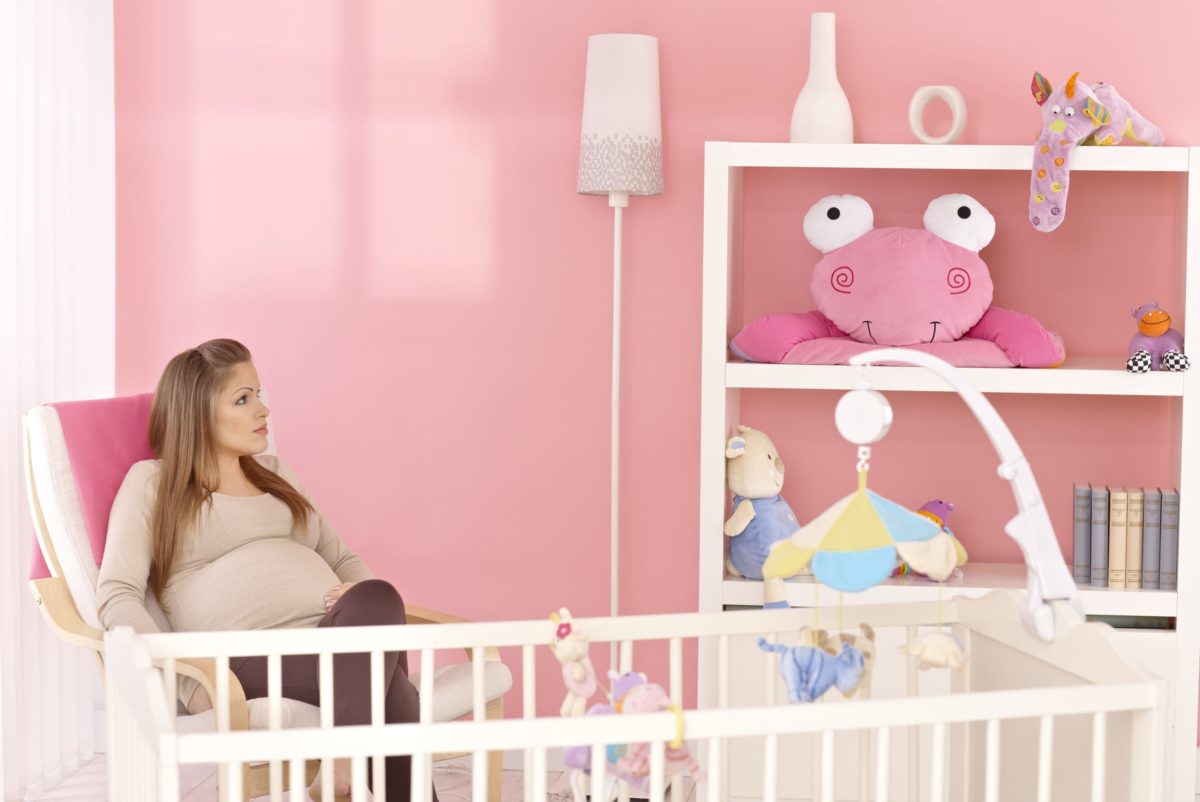
Designing a kindergarten for your future child can be a fun and rewarding experience, but it can also feel a little scary, especially if you don’t know where to start – feeling a little overwhelmed? Take some time to take advantage of this helpful nursery design and you will be ready to hit the stores in no time.
Pick a specific style or theme
While it’s not strictly necessary to be limited to a single concept, sticking to a specific concept can narrow your focus and create a more coherent design.
Choose the perfect palette
Swim in a sea of colored chips? Save these eight fuel-tight paint tips for testing.
Before painting, choose textiles
There’s nothing worse than finally finding the perfect screen or crib of your dreams to discover color scheme conflicts just with your color work. With the dazzling array of colors available and the advent of color matching technology, it’s easier to choose your textiles first and then buy the right color.
Identify a focus
Most kindergartens focus on krub, but there are many more options to choose from. A large window or alcove, or even a signature piece like an oversized toy or a painted dress, can also grab attention.
Decorate the ceiling
Children spend most of their time on their backs. Why don’t you think about your little one Paint the ceiling a nice color or enhance your nursery theme with murals or desals.
Consider going green
Designing an eco-friendly kindergarten is not only good for the planet but also good for the baby! The products we use every day are full of strange chemicals. These chemicals, known as VOCs, are slowly used up and affect air quality through evaporation. You can even make your little one sick.
Wondering how to create a non-toxic, environmentally friendly space for your little one? Try these seven simple tips for a natural nursery design.
Create a care ward
Nursing is a fascinating business and juggling can become quick if you are not prepared. Take the time to use these tips to relieve stress and have everything you need on hand.
Build a plumbing station
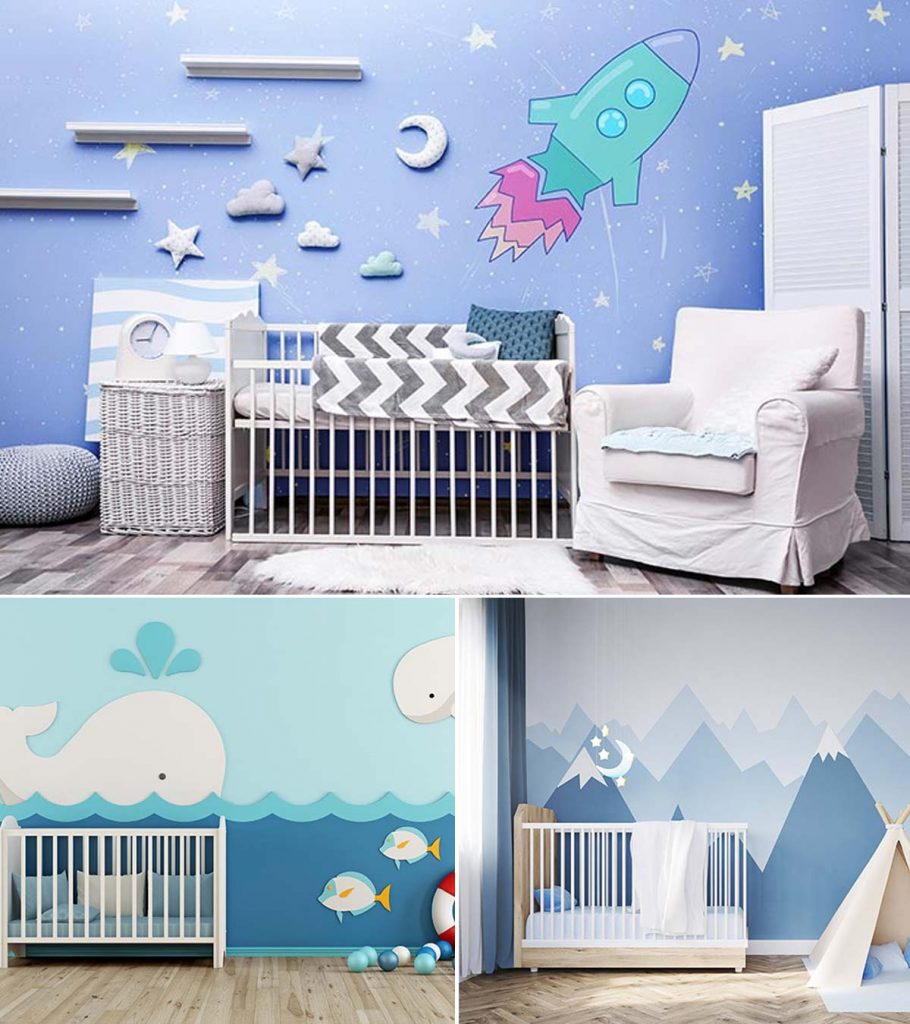
Keep your kindergarten aseptic by being ready to provide sanitation. Put a tray of antibacterial gel and paper towels on your variable table to avoid contamination of the surface, and give hotspots of antibacterial wipes once a day. You must also have plans for dirty diapers and heavy dirty clothes, such as: B. Diaper disposal systems and individual barriers.
Develop a system for sorting and storing clothes
Maintaining the baby’s changed clothes is an everlasting challenge. First, arrange your child’s outfit according to size and type. Stock your nursery latches and dresser drawers with the things you can use now and keep them labeled until your baby needs them.
Helps you keep easy-to-access boxes for clothes that you officially think are too small. When the box is full, wash, label, and remove the clothes. If you keep the items separately outdoors, your children won’t be able to return to the closet and you will save the hassle of additional trial sessions.
Get creative with memory
Children bring a lot of things! If you want to stay in the know you need a plan. Double your storage space with these tools. Then, try using this DIY storage project and clever hacks to create your own low cost savings solution.
Install the ceiling fan
Preventing SIDS can be as simple as flicking a switch. A study published in the Archives of Pediatrics and Elegant Medicine found that children who slept under a ceiling fan had a 722% lower risk of developing SIDS! Live in a cold climate? Ceiling fan must be installed!
Leave the house to grow
Think long-term when choosing your children’s room furniture. That little baby bassinet style step may look like a favorite now, but have you left enough room to swap it out for a crib later? No space for the changing table and dresser alone? You can use more of the dresser in the long run. If you think ahead, you can make the most of your money and space.
Don’t neglect your windows
Getting your windows dressed up isn’t about choosing a design – it’s a matter of protection.
Always install blackout screens or heavy blinds in the nursery. This will help the baby sleep longer and more comfortably. More importantly, your home doesn’t get too hot during the day and your child’s risk of developing SIDS is drastically reduced.
Do not use joy lights
Install a dimmer on all intense ceiling lights, especially if they are directly above the lamp. Convenient, great idea to buy a little accent lamp for a touch of history. Read these tips for more help with lighting your kindergarten.
Don’t forget the night light
Night lights offer both protection and comfort, especially during night feeding. You can be adorable right away!
Do not wait for the kindergarten parental controls
The baby still can’t move, but it will be your own toddler disaster zone before you know it. Be sure to cover the electrical outlets and remove the cables. All furniture can be at risk and anchoring protective blankets to the floor to prevent slipping. You should also be wary of the risk of possible shortness of breath and ensure that all medications, ointments, etc. are out of the baby’s reach.
Do you need to be one step ahead of your little one? Make your room child-proof with our complete kindergarten safety checklist and learn how to prevent common accidents in kindergarten with helpful tips.
Don’t forget about storage requirements
Buy and have all necessary diapers, wipes, lotions, and ointments before the baby arrives. Make sure everything you need is within easy reach so you are never tempted to miss a baby.
Don’t wait until the last minute
Make sure your kindergarten project is running very quickly so that there is enough time to advertise new furniture and newly painted rooms. Starting early prevents stress and ensures you have enough energy to finish the job.
Baby Nursery Checklist: 7 Essential Items & 5 Things to Forget
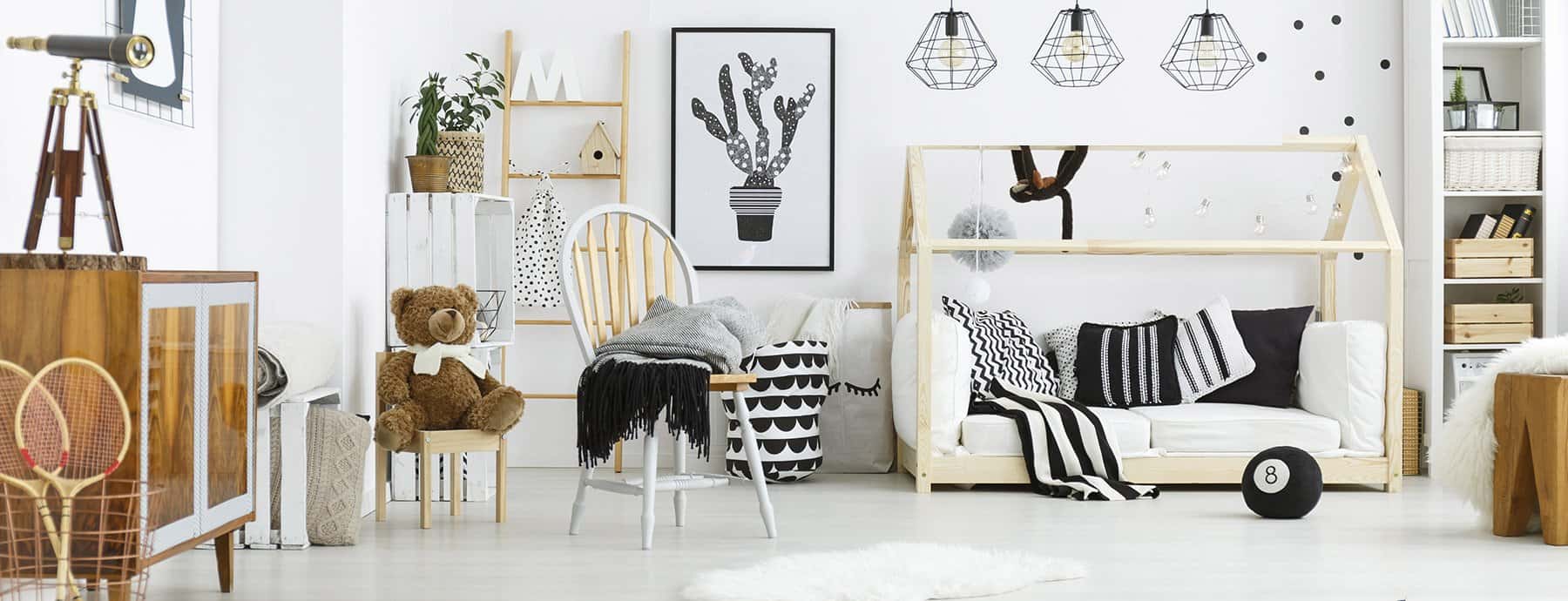
If I could go back in time I would become a wedding planner or someone who arranges kindergartens for my mother’s expectations. Why? Because there are two events in a woman’s life that will go over a reasonable budget: her marriage and the arrival of her baby.
As every woman can remember, they re-imagined their idea of their wedding day, their wedding dress, their location, their surroundings, their shoes – all the details over and over again. When that day came, she started dreaming about her baby. From gender to name, children’s room and clothes that are hung in children’s room closets before the child is born
At this point, her mother began her “settling down time”. Kindergarten is a result of that.
While it is possible to save money on your wedding and reduce the cost of a newborn, kindergartens can get very expensive. Worried and excited new mothers often want to make sure their child has two of the two things that must be in kindergarten. Purchases often become more sensitive than logical and retailers feed them in.
But there is a difference between a wedding and a nursery. A wedding is a celebration between two adults who have decided to meet as a family. And when the marriage is over, you bring charges too. This is a one-time event. The kindergarten is not a festival, but a practical space in which the child is. Kids won’t remember the color of their bassinet or be angry because chevron anger isn’t the right shade of gray. Because the USDA estimates the average goat costs to build. 24,245,000 to 5,455,000, so it is important to reduce unnecessary spending
To find out the important elements of kindergarten, let’s start by understanding who the real one is for: mom. After the baby becomes a young child, kindergarten has to turn it into the necessary things for a child of this age. The occupation of the kindergarten is only temporary. Kindergarten is really for the mother because every object in the house is for the comfort of that person, physically, psychologically, or emotionally.
So what do you need to buy for your kindergarten? Unnecessary costs for which items?
Necessary baby nursery items
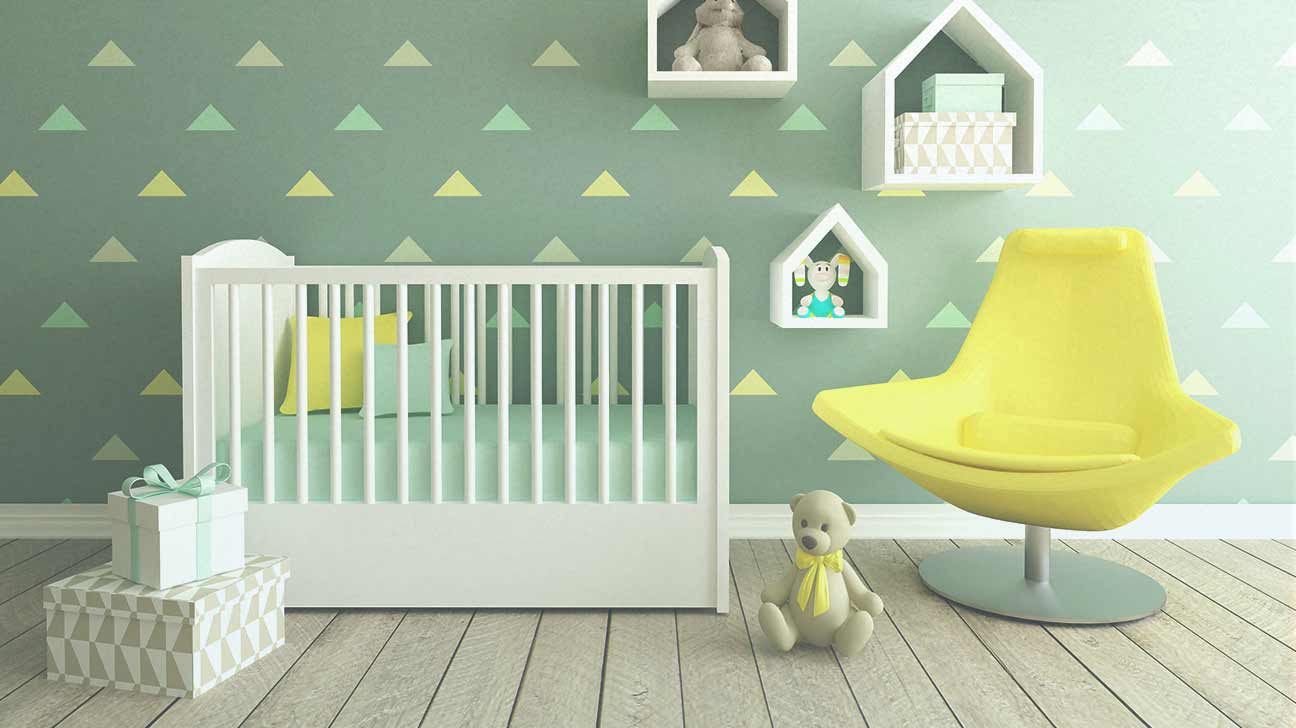
Let’s start with a list of what a kindergarten should have and why:
1. Cage
A cut must be safe before anything else. It should be obvious, but a regret is where the newborn spends most of its time. According to the Baby Center, newborns can sleep 16 to 17 hours a day (67% of their day), so a good curl is important.
One thing to consider before buying a cage is its visibility. We always had a baby camera but found it was difficult to place the camera where the baby was always visible. More than half of the crabs found today have aspects that are closed. Make sure you pick one that is forbidden and visible in all four directions so that you don’t have to go to the nursery every five minutes to make sure the baby is fine. This short notch from Babileto is modern, cheap, and strong.
2. Mattress
This seems like a big debate when it comes to organic vs. Foam vs. Waterproof is possible. However, there are plenty of great mattresses out there between $ 50 and $ 100 that fall into all three categories and are reasonably priced. Choose the one that you think is best for your child. I bought this hypoallergenic crumb mattress and I still use it.
3. Waterproof mattress cover
Not only does the cage need a waterproof mattress cover, but if your baby spends some time with your bed, your bed probably does too. There are countless inevitable spit and breakouts in children. To save time in the early hours of the morning, cover your mattress with a waterproof cover so that all you have to do is change the mattress cover instead of changing the mattress and not washing it. This bamboo mattress protector is a good and affordable choice.
4. Cage sheet
There is a clear difference in quality between fabrics and bed linen. Bert’s bees make cheap organic products, from sheets to lotions. These are reliable and affordable: you want adjectives in all of your baby products.
5. Nursing chair and pillows
A nursing chair can be a chair that you can sit in and comfortably feed your baby. Ideally, this chair allows you to sit back, rock, swivel and lift your legs. Feed a newborn every hour, if not more. So make sure your seat is as comfortable as possible. Many nursing chairs are available for 300 to 800 800. Most are great, but they can only be used for breastfeeding. Instead of buying a conventional “care chair”, I bought a chair from La-Z-Boy. I was given a conventional cradle chair that allows it to be fully enlarged so that my husband can take it to his male cavity for further use after the baby is born.
A nursing pillow is also important. Your baby needs to prepare his head while breastfeeding to avoid indigestion and gas. Trying to support the baby in this position without a pillow will result in a carpal tunnel. I bought a Bopi pillow and used it for two years. This pillow can be used for breastfeeding, but also for abdominal exercises. When the time comes, Bappi works as a seat pad for the children.
6. Drawer and dresser
Babies are small, but they have a lot of clothes because they have to change about three times a day. This means that toilet space is necessary. I recommend buying a drawer or dress for your baby to keep all of their clothes, washcloths, bibs, socks, mittens and hats. A drawer or dresser can also be used as a surface for the modified pad kit, eliminating the need for a separate changing table. This Sarta changing pad is sufficient for every drawer.
7. Diapers, wipes and towels
Early baby needs diapers, wipes, theses, socks and mittens. I used Pampers Sensitive Diapers and Wipes for the first few months and I am happy. It’s the most sensitive time of her life so I’m glad I chose the milder options.
Avoid buying items
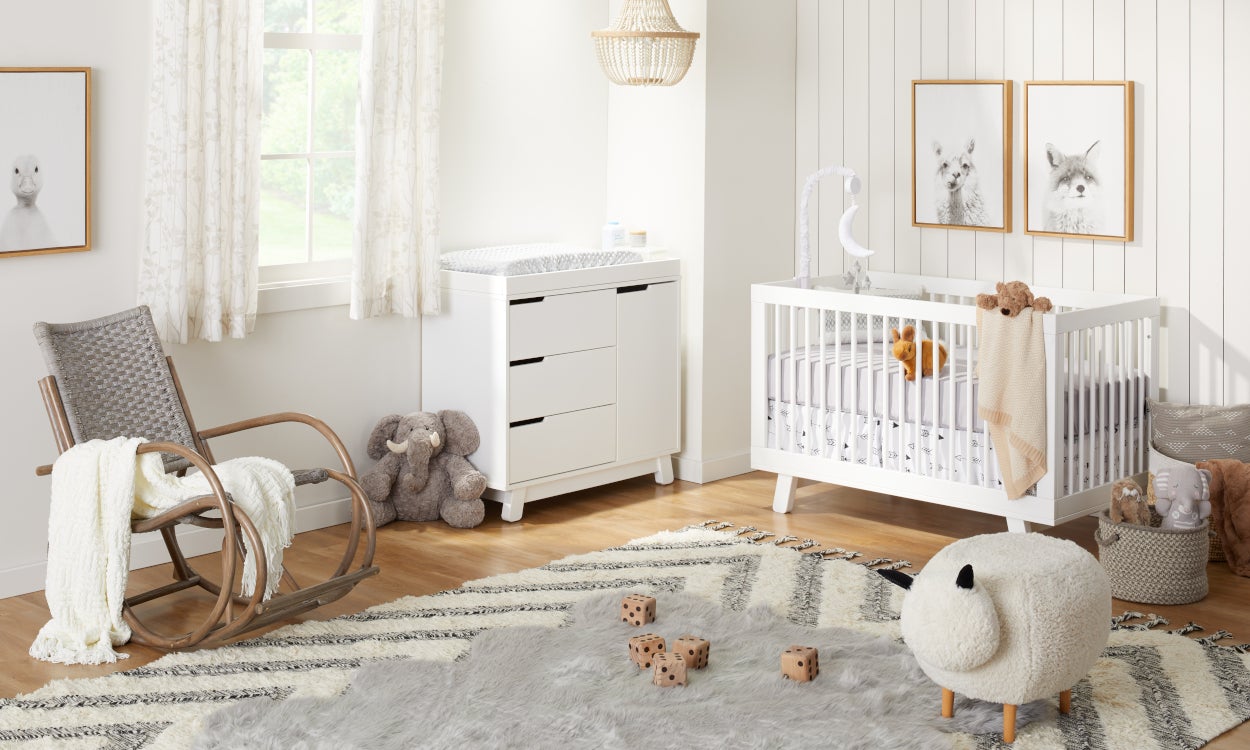
You shouldn’t buy items that the store tells you to buy. Things that are unnecessary or can be bought later are:
1. Blankets, bumpers and dolls
According to the NPR, the number of Sudden Infant Death Syndrome (SIDS) has increased due to hazardous materials like blankets, bumpers and dolls. Just because retailers are selling them doesn’t mean they’re safe.
2. Modify the table
As mentioned above, there is no need to buy a separate changing table. Just buy a modified pad kit and place it on a drawer or dresser.
3. Mobile and white noise maker
Some children may need it to calm down. However, most mothers like me have found that their babies never need them. They just collected dust. Peace can be found in the cradle and the swaying movement of children. Unless you think these are necessary
4. Toys
When it comes to toys, there is nothing better. The fewer of them, the more they focus on each toy. Kids and toddlers get pretty annoyed with the same toy, so turning their toys over by saving half. If your baby doesn’t seem interested in the items in front of him (about two weeks), turn them again. In the beginning, you don’t need to store enough toys to turn around. It will just be a mess for the person who has to clean the kindergarten. There are few stimulants available for newborns. Once you’ve collected more (whether you’re shopping yourself or having gifts), switch to keep the toys fresh in your baby’s eyes.
5. Diaper pile
Yeah, I owe it to owning it. It was a must-have item in the nursery. Many articles swear that the kindergarten smells fresh. I don’t think it retains the smell, but every time I open my diaper pile the stench rushes like a current and engulfs the room. I agree that it is convenient. But I think any dirty diaper that is removed from the baby should just be thrown into a plastic bag. My son’s diaper bag is still contagious in the corner of his room. I want to cancel, but the huge price of 100 keeps me caught in the buyer’s remorse.
The last word
You have to purchase many items after having a baby. This starts with the maternity bag that you brought to the hospital after the water burst. Note, however, that there are more than just expendable items. The money saved by making extra out-of-pocket purchases from mothers can be spent more on helping the new mom with baby care, cleaning, and food. There are also many valuable baby items that are still decorated.
